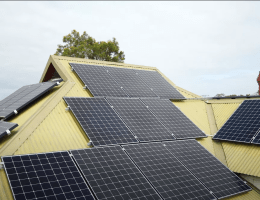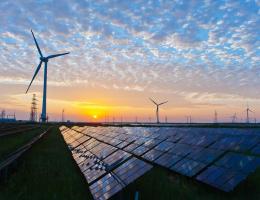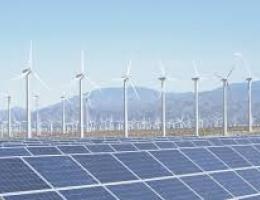
Australian solar homeowners may soon be facing charges to export their clean solar energy into the power grid, under rule changes being proposed by the Australian Energy Market Commission.
The AEMC – an independent statutory body which sets the rules for the electricity market – released a draft report in late March this year, with this new ‘solar tax’ creating a stir of controversy amongst the energy industry.
Though the AEMC are trying to play down the financial impact to solar households, analysis from the Victoria Energy Policy Centre has shown that the rule changes will almost fully eradicate the benefit of income generated from feed-in tariffs.
So solar owners are supposed to sit back and be content with almost no compensation for providing clean solar energy to the grid?
The AEMC argue two main points in attempting to justify the proposed changes. The first is based on overwhelmed infrastructure; that the grid simply wasn’t built to handle the huge uptake of household solar seen in Australia, and thus network costs need to be recovered.
But does household solar substantially increase network costs?
It doesn’t seem so, given Powercor – a major Victorian electricity network – has recently agreed with the energy regulator that just 0.1% will be added to its allowed revenues to account for ‘distributed energy’ (i.e. solar) integration expenditure over the next 5 years.
Installing rooftop solar also brings the source of power generation closer to where it is used, reducing the cost of transmission.
Innovative changes are required in national energy policy to further encourage the transition to the renewables-led electricity grid of the future. But discouraging consumer uptake of solar by charging for exports is not the answer.
Instead, more support could be provided for the installation of battery storage systems, which can play a critical role in stabilizing the energy system by storing solar power when it is not required and then releasing it when it is needed.
The federal government has been non-existent in support of batteries, leaving many state governments such as Victoria, South Australia and the ACT to take it upon themselves and introduce their own rebate schemes. But surely a more streamlined national policy would be beneficial.
Even with further government support battery technology is still at a high price point and it may be several more years before it is widely adopted in Australian households – but this is not the only way you can store solar energy.
The cheapest way to ‘store’ solar power is in your hot water system, by installing a super-efficient heat pump system, that is programmed to run during the middle of the day – precisely the time when solar PV production is at its peak and the supposed solar ‘traffic jams’ are occurring on the grid.
Solar energy is thus ‘stored’ in the form of hot water which is then used as needed by the household.
Recent data shows only 2% of Australian households have heat pump hot water systems installed – here is a massive opportunity for governments to step in and increase support for a technology that not only supports the grid and is the perfect accompaniment with solar PV, but also provides households with extremely low ongoing running costs.
Then there are also electric vehicles as well, yet a further opportunity to store solar power for later use – yet Governments are trying to impose a tax on these as well.
The solar ‘traffic jams’ argument from the AEMC seems to imply that there is too much solar on the grid already – but for a greener economy we still need much more.
Data shows we are heading in the right direction; 20% of Australian households currently have solar power installed, and it is predicted that number will jump to 50% within a decade.
Solar traffic on the grid is only going to increase – and more government support for battery technology, heat pumps and electric vehicles will help us get ahead of the curve and prepare for the future.
With the draft proposal being backed by welfare groups including the Australian Council of Social Services, the second argument from the AEMC relates to social equality – that the 80% of Australian households without solar power should not be made to pay for the network costs associated with the increased abundance of solar PV in the market. The proposal models that these households would receive a $15 reduction in their annual energy bills.
While there may be some merit to this argument, is penalising current solar owners the best resolution?
Why not focus instead on making solar power more accessible to low income households and renters?
Government supported rebate and loan schemes like that seen in Victoria can reduce the upfront cost of a basic solar system to almost zero, with low interest financing also allowing the system to be cash flow neutral (or even cash flow positive) in many cases.
The Victorian Government is also working on making solar power more accessible for renters. Introducing more of these types of schemes on a national scale would be an important step towards ensuring the benefits of solar can be enjoyed by all.
What is also often overlooked in the equality debate (because the benefits are longer term and harder to measure) is the societal benefits from installation of solar PV.
Solar homeowners are contributing to the transition away from fossil fuels, and thus creating environmental and climate change benefits that accrue to the entire community.
Professor Bruce Mountain, Director of the Victoria Energy Policy Centre at Victoria University, perhaps put it best when he said “It is like arguing that bicycles should be charged for using the roads”.
Indeed, why discourage something – like a homeowner installing solar power – that is contributing towards a cleaner and more sustainable Australia?






